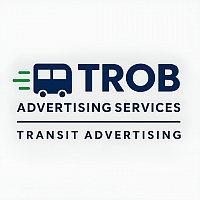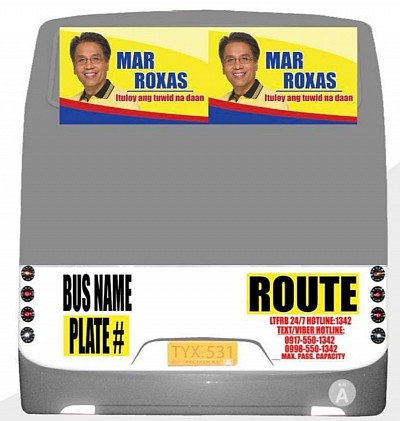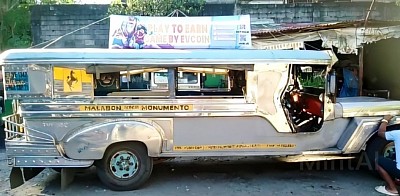Comprehensive Insights and Key Information on Transit Advertising in the Philippines – Knowledge & Feature Page
Optimizing Transit Advertising Strategies in the Philippines for the Christmas Season
The Christmas season is a peak time for transit advertising, as many people travel for shopping, holiday festivities, and family gatherings. Here are some key aspects to consider regarding transit advertising during this festive period:
1. High Visibility
- increased Foot Traffic: During the holiday season, public transit stations and vehicles see a surge in passengers, providing advertisers with a broader audience.
2. Creative Campaigns
- Seasonal Themes: Utilizing holiday-themed designs and messaging can enhance engagement. Ads that evoke festive sentiments tend to resonate well with passengers.
3. Emphasizing Localism
- Supporting Local Businesses: Advertisers can promote local events, shopping districts, and services relevant to the community during the holidays.
- Community Engagement: Ads that give back to the community or highlight local charitable initiatives can resonate well and create a positive brand image.
4. Timing and Duration
- Campaign Schedule: Planning campaigns to run from late November through early January can capture the entire holiday shopping season.
- Frequency: Frequent rotation of ads can maintain audience interest throughout the season, introducing new promotions as the holiday approaches.
5. Promotional Offers
- Seasonal Discounts: Highlighting special holiday discounts or promotions can drive immediate action from consumers who are in shopping mode.
- Event Promotions: Advertising local holiday events or festivals can encourage participation and increase brand visibility.
Transit advertising during the Christmas season offers unique opportunities for brands to connect with a wide audience. By leveraging the festive spirit, creative campaigns, and strategic placements, advertisers can effectively reach potential customers and drive engagement during this vibrant time of year.
Optimizing Political and Election Campaign Advertising Through Transit Advertising in the Philippines
Election campaign advertisements are promotional materials produced by candidates, political parties, or interest groups to advocate for political office during an election period.
Characteristics:
-Content Focus: Primarily emphasize the candidate’s policies, character, qualifications, and vision for the future.
-Targeting: Frequently directed at specific voter demographics based on factors such as age, socioeconomic status, or political affiliation.
Benefits:
-Engages voters directly, influencing public perception and voter turnout.
-Relies on strategic placement and messaging to effectively connect with target audiences.
Considerations:
-Subject to stringent regulations concerning funding, disclosure, and content accuracy (e.g., truth in advertising).
-Effectiveness can be evaluated through metrics such as increased name recognition or shifts in polling data.
-Involves substantial costs, particularly during competitive election cycles, and requires strict compliance with campaign finance laws.
Intersection of Both
Transit advertising serves as a valuable element of election campaigns, especially in major urban areas where public transportation is extensively utilized. Campaigns can leverage transit spaces to enhance visibility and engage voters during their daily commutes.
Key Takeaways
-Strategic Application: Candidates may employ transit advertising to bolster their presence in targeted locations, particularly among demographics with high public transit usage.
-Regulatory Compliance: Both advertising forms must comply with local regulations, with election advertisements subject to additional scrutiny regarding funding and messaging.
-Impact Assessment: The effectiveness of transit advertising within the election context can be measured by changes in public awareness, voter turnout, and polling results.
The integration of transit advertising with election marketing can significantly expand a candidate’s reach and positively influence their campaign strategy.
Fundamental Concepts and Influence of Jeepney Advertising Campaigns in the Philippines
The core objective of a jeepney advertising campaign is to embody the vibrant and dynamic essence of Filipino culture, utilizing the iconic jeepney as a symbol of community, connectivity, and creativity. By integrating vivid designs, memorable slogans, and compelling visuals, the campaign seeks to highlight the distinctive attributes of the Philippines and its people, while fostering a sense of pride and identity among commuters and observers. This approach enables advertisers to effectively engage a broad audience and establish a strong foothold in the local market, delivering a memorable and impactful brand experience.
READ. https://www.rappler.com/business/video-modern-jeepney-philippines-explainer/
Historical Development and Progression of Transit Advertising in the Philippines: An In-Depth Overview
Transit advertising in the Philippines dates back to the early 1900s. Initially, traditional billboards were installed along roadsides, highways, and major thoroughfares to engage both pedestrians and motorists, showcasing various products, services, and events.
Significant growth and diversification in transit advertising occurred during the 1970s and 1980s, coinciding with the rising popularity of buses as a primary mode of transportation in metropolitan areas such as Manila. Bus operators began permitting advertisers to display promotional materials on both the exterior and interior surfaces of their vehicles, thereby creating new opportunities for brands to reach broader audiences.
The advent of bus wraps—where the entire exterior of a bus is enveloped in advertising—marked a pivotal development in transit advertising. This approach proved highly effective, functioning as a mobile billboard that captured the attention of pedestrians and drivers alike.
Over time, transit advertising diversified further with the introduction of digital screens inside buses, enabling dynamic and interactive content. Additionally, advertisers expanded their reach by utilizing other modes of transport, including taxis, jeepneys, trains, and tricycles.
Currently, transit advertising remains a robust marketing channel in the Philippines. The emergence of ride-hailing platforms such as Grab and Uber has provided advertisers with the ability to target specific demographics more precisely. As a result, transit advertising continues to be a widely adopted and impactful strategy for brands aiming to engage consumers while they are in transit.
Transit Advertising in the Philippines: Emerging Trends and Innovations Defining the Future Landscape
In 2026, transit advertising in the Philippines is projected to experience continued growth in both popularity and effectiveness, as an increasing number of brands and businesses recognize the strategic advantage of engaging captive audiences via buses, taxis, trains, and other public transportation modes.
Amid rising urbanization and escalating traffic congestion in major metropolitan areas such as Metro Manila, transit advertising presents a distinctive opportunity to connect with commuters who spend considerable time in transit daily. This advertising medium enables brands to reach a broad and diverse demographic, thereby enhancing visibility and strengthening brand awareness.
Furthermore, 2026 is anticipated to witness significant advancements in digital transit advertising, including the deployment of interactive displays, location-based targeting, and real-time performance tracking. These innovations will empower advertisers to optimize their campaigns and more precisely engage their intended audiences.
In summary, transit advertising in the Philippines is poised to become an integral component of marketing strategies for brands aiming to establish a lasting impact within a dynamic and competitive marketplace.
Integrated Online and Offline Transit Advertising Strategies in the Philippines for Maximum Impact
Transit advertising integration, encompassing both online and offline channels, involves merging traditional out-of-home advertising with digital marketing strategies to deliver a unified and comprehensive campaign.
Key methods to achieve this integration include:
QR Codes and Mobile Applications: Transit ads can feature QR codes or prompts encouraging users to download mobile apps, facilitating direct engagement with the brand. Scanning the QR code or installing the app grants access to exclusive content, discounts, or promotional offers.
Social Media Integration: Incorporating social media handles or hashtags within transit advertisements motivates commuters to interact with the brand online. This approach can support social media contests or campaigns that generate user-driven content linked to the transit ads.
Geotargeting and Retargeting: Utilizing location-based technologies enables transit ads to target specific demographics within defined areas. Furthermore, retargeting strategies can serve online advertisements to users who have previously encountered or engaged with the offline transit ads.
Advanced Tracking and Analytics: The fusion of online and offline transit advertising enhances tracking capabilities and analytics. Digital tools allow advertisers to accurately measure campaign performance, including reach, engagement, and conversion metrics.
The advantages of integrating online and offline transit advertising include:
Expanded Reach and Engagement: Combining both advertising formats enables brands to access a broader audience, amplifying brand visibility while fostering increased online interaction.
Improved Data and Insights: This integration facilitates superior data collection and analysis, allowing advertisers to assess campaign effectiveness in real time and make informed, data-driven decisions.
Seamless Customer Experience: A cohesive integration ensures a smooth transition for commuters from viewing transit advertisements to engaging with the brand digitally, enhancing overall brand loyalty.
Cost Efficiency: Leveraging existing transit advertising assets alongside cost-effective digital targeting methods results in optimized marketing expenditures.
In summary, the integration of online and offline transit advertising establishes a comprehensive and impactful marketing campaign that maximizes reach, engagement, and conversion potential for brands.





